The friendly debate between Pesang Manok and Tinola has been an endless source of playful arguments with my friends, especially during rainy season when we all crave something warm and comforting.
While Tinola will always have a special place in my heart, there's something I love about the way the ginger-infused broth in Pesa wraps around you like a warm hug from your Lola.
Every time I make this recipe, watching the clear broth bubble away with chunks of tender chicken and bright green pechay, I'm transported back to my mother's kitchen where she taught me her secret: using rice washing water instead of plain water to give the soup that extra depth of flavor that makes it uniquely ours.
This Pesang Manok recipe is my go-to comfort food that I'm excited to share with you today.
What is Pesa?
"Pesa" is a Filipino cooking term that comes from the Hokkien Chinese word "peh-sa" (白煠), which refers to a cooking method of parboiling or simmering in water until thoroughly cooked.
In Filipino cuisine, "pagpepesa" is the process of cooking with plenty of ginger in a clear broth. This technique is commonly used for both fish (Pesang Isda) and chicken (Pesang Manok) dishes. The method typically produces a light, clear broth that's flavored primarily with ginger, and the dish is usually garnished with vegetables like cabbage or pechay (bok choy).
Jump to:
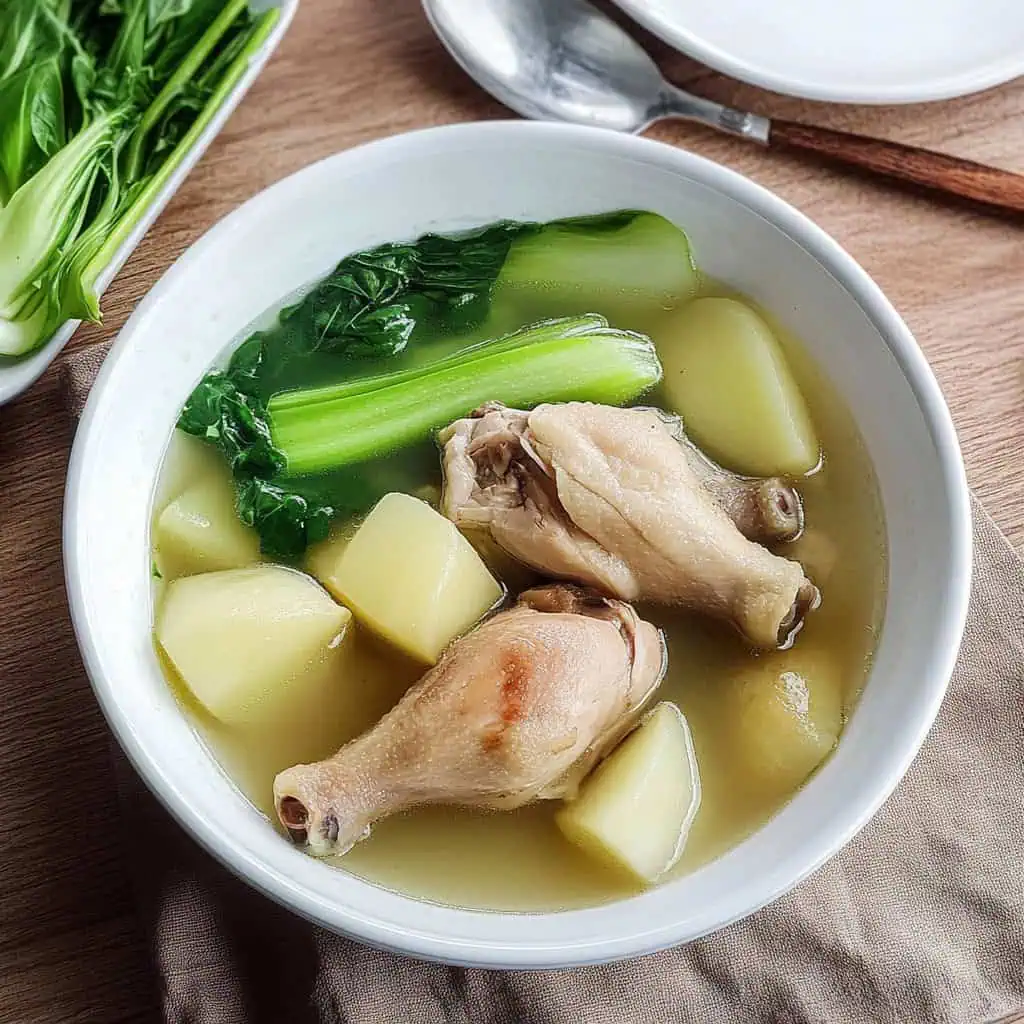
Why You'll Love This Recipe
- Incredibly comforting and perfect for cold weather or when feeling under the weather
- Simple, wholesome ingredients that are easy to find
- One-pot meal that's both nutritious and filling
- Rich in immune-boosting properties from ginger and vegetables
- Budget-friendly family meal
- Ready in just one hour
- Versatile recipe that can be customized with different vegetables
Ingredients
This ingredient list represents the perfect balance of Filipino home cooking wisdom. The whole chicken provides rich flavor and protein, while pounded ginger adds warming medicinal properties.
Potatoes absorb the savory broth while adding heartiness, and the two types of greens (Napa cabbage and bok choy) offer contrasting textures and fresh nutritional value. Fish sauce delivers that crucial umami depth that distinguishes Filipino soups, working harmoniously with the natural sweetness from onions.
The result is a nourishing, balanced soup where each ingredient serves a clear purpose.
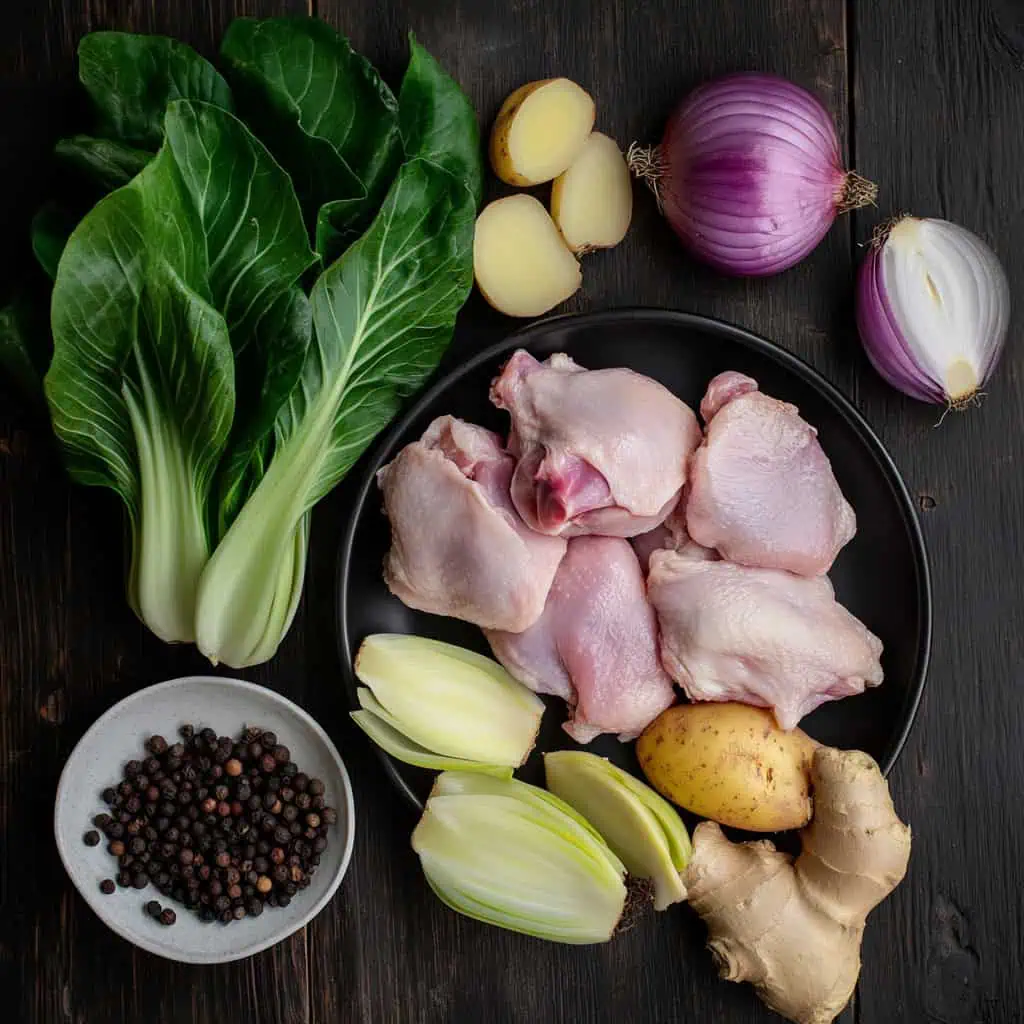
- 1 whole chicken (3-4 pounds), cut into serving pieces
- 6 cups water (preferably rice washing water for authentic flavor)
- 2 thumb-sized ginger pieces, peeled and pounded
- 1 large onion, peeled and quartered
- ½ teaspoon whole peppercorns
- 2 tablespoons fish sauce (patis)
- Salt to taste
- 2 medium potatoes, peeled and quartered
- 1 small Napa cabbage, cut into pieces
- 1 bunch bok choy, ends trimmed and cut into pieces
Equipment
- Large pot (kaldero) - For simmering the soup; a heavy-bottomed pot distributes heat evenly and helps maintain a gentle simmer
- Sharp knife (kutsilyo) - For cutting ingredients; a well-sharpened knife makes preparing chicken and vegetables safer and more efficient
- Cutting board (sangkalan) - For preparing ingredients; preferably use separate boards for meat and vegetables to prevent cross-contamination
- Spider strainer (sandok) - For skimming impurities; essential for achieving that crystal-clear broth characteristic of traditional pesa
- Measuring spoons (kutsara pansukat) - For precise measurements of seasonings to achieve balanced flavor
- Wooden spoon (sandok kahoy) - For gentle stirring without scratching your pot and disturbing the clarity of the broth
- Vegetable peeler - For preparing potatoes and ginger; helps remove skin efficiently while minimizing waste
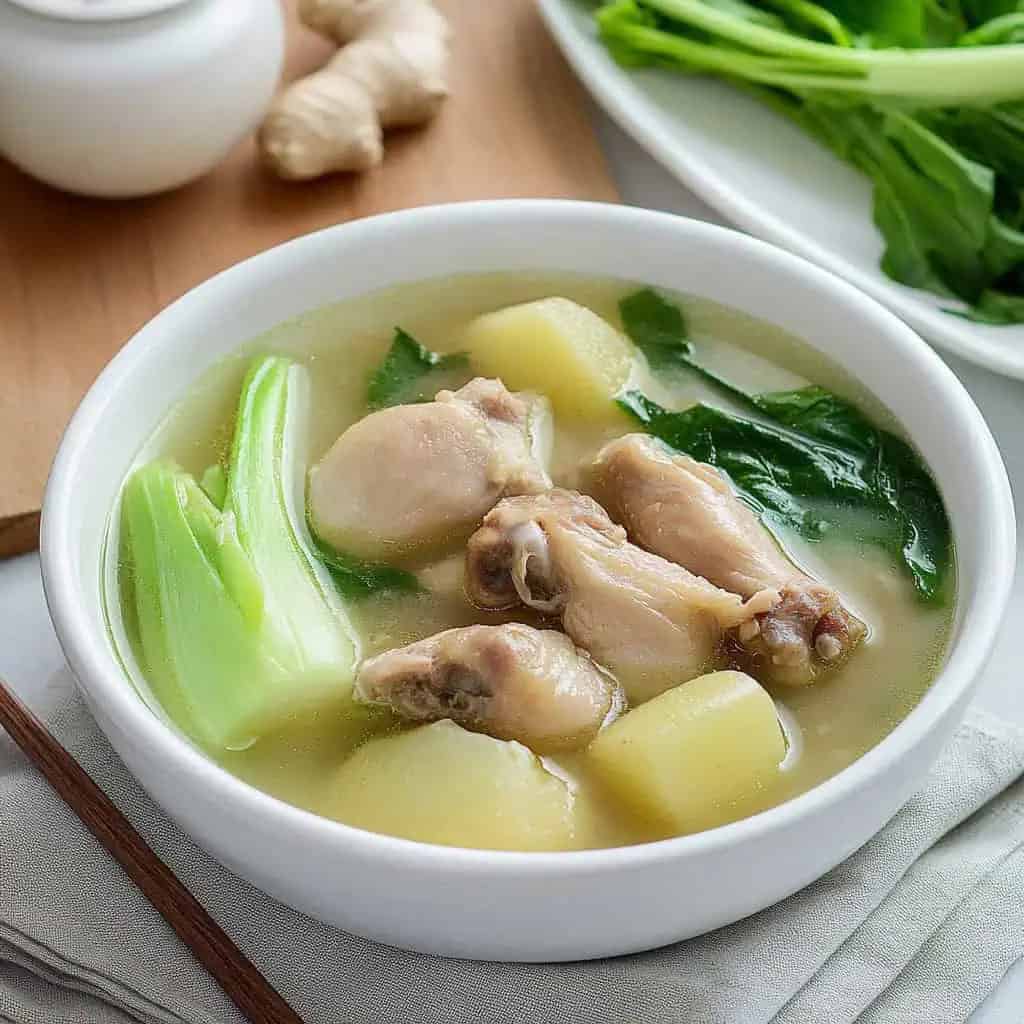
How To Make
- Begin by preparing all your ingredients: Cut the chicken into serving pieces. Peel and pound the ginger (pounding releases more flavor than slicing). Peel and quarter the onion. Peel and quarter the potatoes. Cut the Napa cabbage and bok choy into bite-sized pieces.
- Place the chicken pieces and water in a large pot. Bring to a boil over medium-high heat (180°F/82°C). Using a spider strainer, carefully skim off any scum or foam that rises to the surface. This crucial step ensures a pristine, clear broth that is the hallmark of properly prepared pesa.
- Once the broth is clear, reduce heat to medium-low (160°F/71°C). Add the pounded ginger, quartered onion, whole peppercorns, and fish sauce. Cover and simmer for 20-25 minutes, or until the chicken is tender and cooked through.
- Add the quartered potatoes to the pot and cook for 8-10 minutes until fork-tender. Add the Napa cabbage and bok choy, cooking for an additional 2-3 minutes until the vegetables are crisp-tender but still bright green.
- Season with additional salt to taste. Let the soup rest for 10 minutes before serving to allow the flavors to meld together completely.
- Serve hot with steamed rice and your choice of condiments like fish sauce with calamansi or crushed garlic in vinegar.

Tips from Lola's Kitchen
- Use native chicken whenever possible for a more robust, flavorful broth. The slower-raised birds develop deeper flavor.
- Always pound ginger instead of slicing to release more of its essential oils and medicinal compounds.
- Save rice washing water from your morning meal prep to use instead of plain water. This traditional technique adds a subtle richness and body to the broth that plain water can't match.
- Add ginger gradually - you can always add more to taste, but you can't remove it once it's in the soup.
- Skim thoroughly during the first 10 minutes of cooking for the clearest possible broth.
- Let the soup rest for 10 minutes before serving. This short resting period allows the flavors to settle and deepen.
- Keep vegetables bright by adding them only in the final minutes of cooking. Overcooked vegetables lose both nutrients and visual appeal.
Substitutions
- Chicken: Boneless chicken thighs work well for quicker cooking time. Turkey parts can also be substituted for a different flavor profile.
- Napa Cabbage: Regular green cabbage or pechay Baguio (Chinese cabbage) can be used as alternatives.
- Bok Choy: Spinach, mustard greens, or kangkong (water spinach) make excellent substitutes.
- Fish Sauce: Light soy sauce can work, but reduce the amount and adjust salt accordingly as the flavor profile will change.
- Fresh Ginger: In an emergency, ginger powder can be used (1 teaspoon = 1 thumb of fresh ginger), but fresh is strongly preferred for authentic flavor.
- Potatoes: Sweet potatoes or sayote (chayote) can add different textures and nutritional benefits.
- Rice Washing Water: If unavailable, regular water with a tablespoon of rice flour whisked in can approximate the starchy quality.
Troubleshooting
- Cloudy Broth: If your broth turns cloudy, you likely boiled too vigorously or didn't skim thoroughly enough. For future batches, maintain a gentle simmer and skim frequently during the first 10 minutes.
- Tough Chicken: If chicken remains tough after recommended cooking time, your heat may be too high. Reduce heat and extend simmering time by 10-15 minutes until meat easily pulls from the bone.
- Mushy Vegetables: Add hardier vegetables like potatoes first, and quick-cooking greens like bok choy only in the final minutes. Each vegetable should be added according to its cooking time.
- Bland Taste: Adjust fish sauce and salt gradually. Remember that flavors intensify as the soup rests, so taste after the 10-minute resting period before final seasoning.
- Oily Surface: For a cleaner soup, refrigerate briefly and skim off solidified fat, or use paper towels to blot excess oil from the surface.
- Too Much Ginger: Balance overwhelming ginger heat with a splash of vinegar or lemon juice to brighten the flavor profile.
Storage & Reheating
- Refrigerate: Store in an airtight container for up to 3 days. For best results, keep broth and chicken together but store cooked vegetables separately to prevent them from becoming soggy.
- Freeze: The soup base (broth and chicken) freezes well for up to 2 months. Freeze without vegetables, as they'll become mushy upon thawing.
- Reheat: Warm gently on the stovetop until it reaches 165°F/74°C. Add fresh vegetables during reheating for the best texture and nutritional value.
- Refresh Flavor: When reheating, add a small piece of fresh pounded ginger to reinvigorate the aromatic qualities that may have diminished during storage.
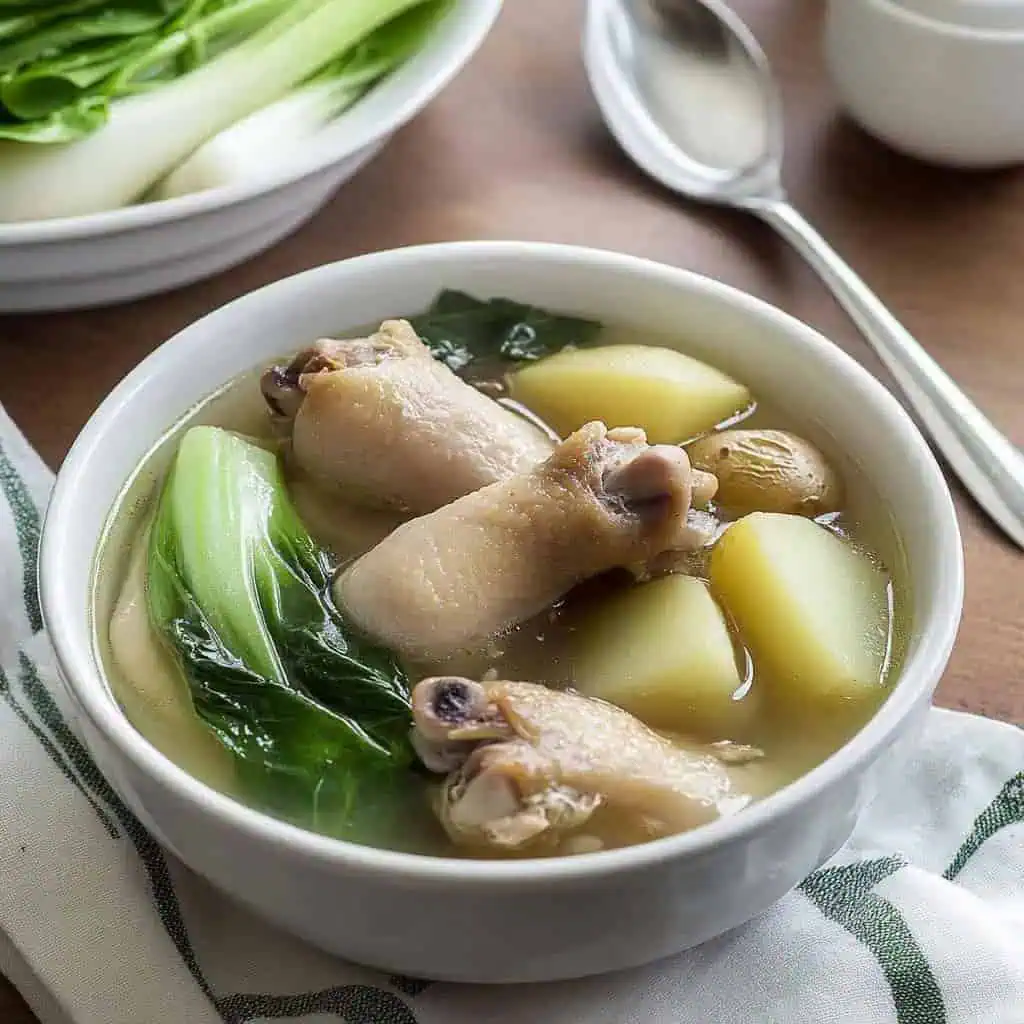
FAQ
What's the difference between Pesang Manok and Tinola?
While both are ginger-based chicken soups, Tinola features green papaya and moringa leaves (malunggay), with a stronger emphasis on garlic. Pesa focuses on potatoes, cabbage, and bok choy with a cleaner, more ginger-forward profile.
Can I make this in advance for a party?
Yes! Prepare the broth and chicken a day ahead, then reheat and add fresh vegetables just before serving. This actually improves the flavor as the broth has more time to develop.
Is this good for sick people?
Absolutely. The ginger has natural anti-inflammatory properties, while the clear broth provides hydration and the chicken offers protein for recovery. It's especially soothing for colds, flu, and digestive issues.
How do I prevent potatoes from getting too soft?
Add potatoes after the chicken is nearly cooked (about 15-20 minutes into simmering) and maintain a gentle simmer rather than a rolling boil.
Can I use chicken breast only?
Yes, but reduce the simmering time to 15 minutes to prevent drying out. For best results, bone-in chicken pieces provide more flavor to the broth.
Is this recipe suitable for meal prep?
Definitely. Prepare a large batch of the broth and chicken, portion into containers, and freeze. When ready to eat, thaw, reheat, and add fresh vegetables.
Can I use a slow cooker for this recipe?
Yes. Cook chicken, ginger, onion, and seasonings on low for 6-8 hours or high for 3-4 hours. Add potatoes during the final hour and greens during the last 15 minutes.
How can I make this soup more filling?
Add more potatoes or include other root vegetables like carrots and turnips. Some regions also add sotanghon (glass noodles) or misua (wheat noodles) for a heartier meal.
Related
Looking for other recipes like this? Try these:

Pesang Manok (Filipino Ginger Chicken Soup)
Equipment
- Large pot (kaldero) for simmering the soup
- Sharp knife (kutsilyo) for cutting ingredients
- Cutting board (Sangkalan) for prep work
- Spider strainer (sandok) for skimming impurities
- Measuring spoons (kutsara pansukat) for precise measurements
- Wooden Spoon (Sandok Kahoy) for gentle stirring
- Peeler for preparing vegetables
Ingredients
For the Broth Base
- 1 whole chicken 3-4 pounds, cut into serving pieces (manok)
- 6 cups water tubig
- 2 thumb-sized ginger luya, peeled and pounded
- 1 large onion sibuyas, peeled and quartered
- ½ teaspoon whole peppercorns paminta
- 2 tablespoons fish sauce patis
- Salt asin to taste
Vegetables
- 2 medium potatoes patatas, peeled and quartered
- 1 small Napa cabbage repolyo, cut into pieces
- 1 bunch bok choy pechay, ends trimmed and cut into pieces
Instructions
- Begin by preparing your ingredients: Cut one whole chicken (3-4 pounds) into serving pieces. Peel and pound 2 thumb-sized pieces of ginger (luya). Peel and quarter 1 large onion (sibuyas). Peel and quarter the potatoes (patatas). Cut the Napa cabbage (repolyo) and bok choy (pechay) into pieces.
- Place the chicken pieces and 6 cups of water (tubig) in a large pot. Bring to a boil over medium-high heat (82°C/180°F). Using a spider strainer (sandok), carefully skim off any scum or foam (bula) that rises to the surface to ensure a clear broth (hanggang maging malinaw ang sabaw).
- Once the broth is clear, reduce heat to medium-low (71°C/160°F). Add the pounded ginger, quartered onion, ½ teaspoon whole peppercorns (paminta), and 2 tablespoons fish sauce (patis). Cover and simmer for 20-25 minutes, or until the chicken is tender (hanggang lumambot ang manok).
- Add the quartered potatoes to the pot and cook for 8-10 minutes until fork-tender (hanggang maluto ang patatas). Add the Napa cabbage and bok choy, cooking for an additional 2-3 minutes until the vegetables are crisp-tender but still bright green (hanggang maluto pero crispy pa rin ang gulay).
- Season with additional salt (asin) to taste. Let the soup rest for 10 minutes before serving to allow the flavors to meld together.
- Serve hot with steamed rice (kanin) and condiments like fish sauce with calamansi or crushed garlic in vinegar.
Tips from Lola's Kitchen
- Use native chicken (native na manok) for more flavorful broth
- Pound ginger before adding to release more flavor
- Save rice washing water (pinaghugasan ng bigas) to use instead of plain water for deeper flavor
- Add ginger gradually - you can always add more but can't take it away
- Let soup rest for 10 minutes before serving to allow flavors to meld
Nutrition
Story Behind Pesang Manok (Filipino Ginger Chicken Soup)
Pesang Manok traces its roots to traditional Filipino home kitchens, where the art of boiling meat with ginger (pagpepesa) has been practiced for generations. This cooking method originated in Chinese-Filipino households, where similar clear broths were prized for both their flavor and medicinal properties. The term "pesa" itself comes from Hokkien "peh-sa" (白煠), referring to the technique of parboiling in water until perfectly cooked.
What makes Pesang Manok stand out in Filipino cuisine is its remarkable clarity of flavor. While many Filipino dishes layer multiple bold tastes, pesa celebrates simplicity through its pure, ginger-infused broth. This approach reflects the Chinese influence on Filipino cooking, where the natural flavors of ingredients are allowed to shine. The addition of patis (fish sauce) is a distinctly Filipino touch, bridging Chinese cooking methods with local tastes.
The dish gained prominence as a go-to comfort food during rainy seasons and became a trusted remedy for colds and flu. Filipino mothers and grandmothers would prepare this soup not just for its taste, but for the healing properties of ginger combined with the nourishing qualities of chicken broth. Today, Pesang Manok remains a beloved example of Filipino food's Chinese heritage while representing the kind of unfussy, nurturing food that defines Filipino home cooking.
Interestingly, while variations of chicken soup exist throughout the Philippines, such as the more famous Tinola or the coconut-based Ginataang Manok, Pesang Manok stands apart for its elegant restraint. Each region may add its own twist – some areas prefer more ginger, others add extra vegetables – but the core principle remains: clean flavors, clear broth, and the comforting combination of chicken, ginger, and tender vegetables.
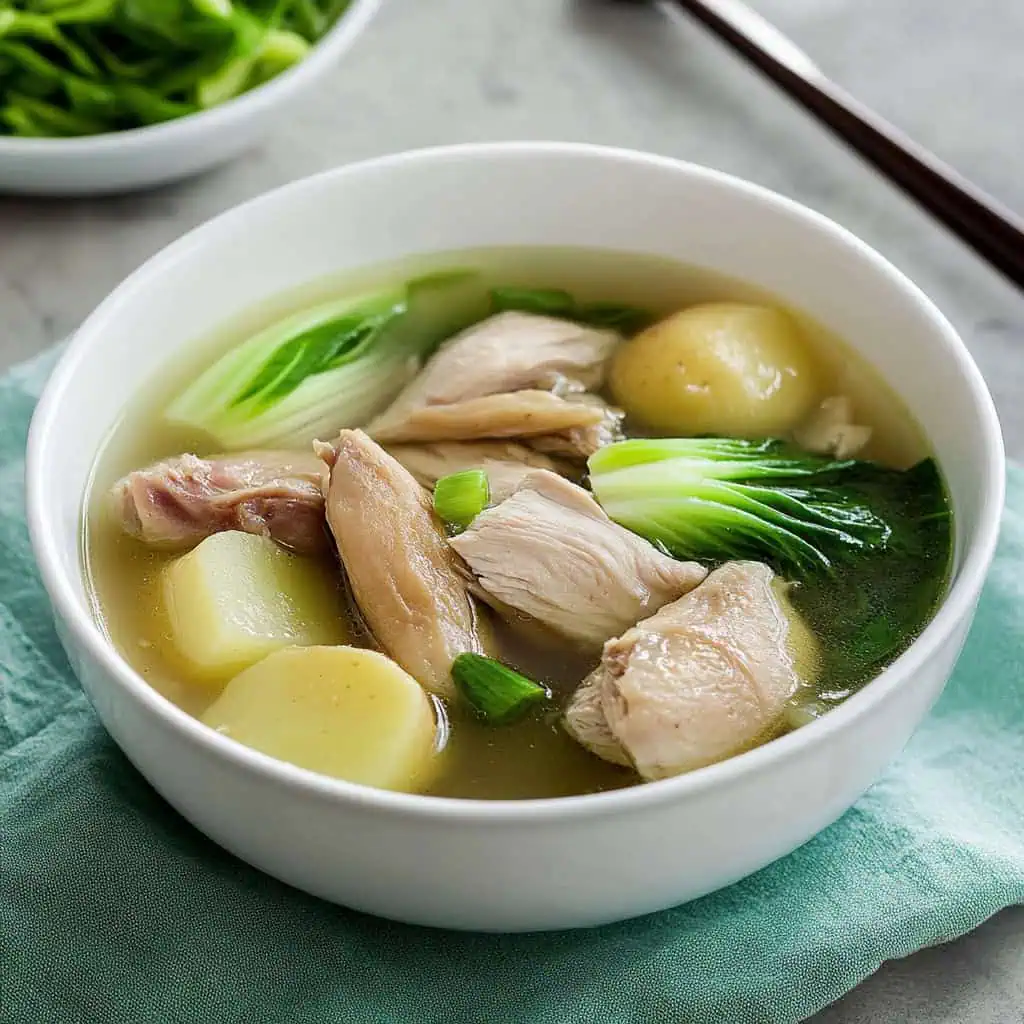







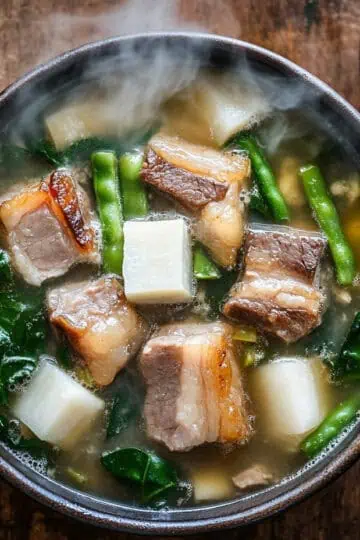
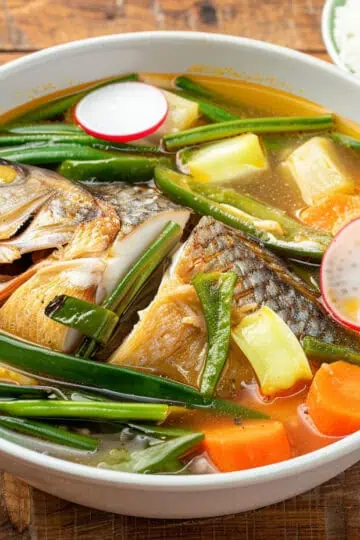
Comments
No Comments